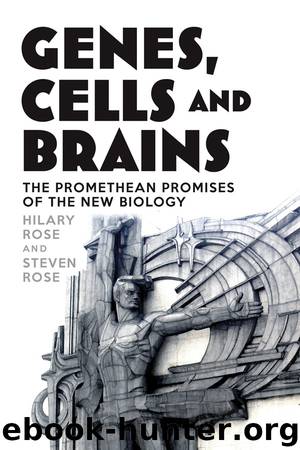Genes, Cells and Brains by Hilary Rose

Author:Hilary Rose
Language: eng
Format: epub, mobi
Publisher: Verso Books
* * *
* This chapter draws on Hilary’s 1999 ethnographic study of the issues surrounding deCode as the first DNA biobank; all references unless specifically cited here are given in H. Rose, Endnote 1.
6
The Global Commodification of Bioinformation
Biobanks are not new. Collecting and storing human tissue has a long history. Scientific medicine’s focus on such tissues, however, began not in the West but in the golden age of Islam, a period extending from the eighth to the fourteenth century, when scholars dissected the human body to study its internal mechanisms. Despite the mediaeval trade in saints’ relics in the West, religious law forbade the practice of human dissection. It was only with the Renaissance that the Church’s grip weakened, enabling both the arts and the sciences to dissect human bodies. In the centuries that followed, human dissections became for medical students a routine part of Western medical education, crucial for teaching the anatomy underpinning the surgeon’s work.
Initially surgeons made their own collections of both normal and diseased and damaged human bones and organs. By the closing years of the eighteenth century these personal collections were largely located in the new hospital pathology museums. Skulls, skeletons, formaldehyde-preserved diseased and mis-shapen organs and foetuses were curated with the objective of both transmitting and advancing knowledge as part of the programme of modernising medicine. By the twentieth century wax-embedded tissue slices and frozen blood had been added to the collections. How many such human bio-specimens have been collected and stored is unquantifiable, but to give an example for Sweden, a small country with a population of 9 million, pathologists estimate that there are between 40 and 80 million paraffin blocks in store at any one time. All these collections could be called biobanks, but the term itself only became widely used with the advent of the new DNA biobanks as the millennium approached.
With the media’s uncritical enthusiasm for the latest genetic explanation for this or that disease or behaviour, genetic determinism became the order of the day, marginalising the greater complexity of social, cultural and economic explanations of disease. The successes of the health promotion campaigns inspired by the World Health Organisation in the 1980s – which had reduced heart disease and premature death, dramatically so in some countries, notably Finland – were forgotten; gene-hunting was the order of the day. In this fin-de-siècle culture of genomania, the vision of what DNA biobanking could offer to science, medicine and wealth creation generated a global proliferation of DNA biobanking projects, from Iceland to the UK, from Northern Sweden to Quebec, Tonga, Norway, dozens in the US and many others in every researching country. Geneticists, venture capital, Big Pharma, and local and central government all wanted in on the dream of personalised medicine and new blockbuster drugs.
Early in 1999, while deCode was beginning to construct the HSD in Iceland, a proposal for a DNA biobank embracing the entire and highly heterogeneous population of Britain was published in the British Medical Bulletin, entitled ‘Impact of Genomics on Healthcare’.
Download
This site does not store any files on its server. We only index and link to content provided by other sites. Please contact the content providers to delete copyright contents if any and email us, we'll remove relevant links or contents immediately.
Enlightenment Now: The Case for Reason, Science, Humanism, and Progress by Steven Pinker(7234)
A Journey Through Charms and Defence Against the Dark Arts (Harry Potter: A Journey Through…) by Pottermore Publishing(4781)
The Immortal Life of Henrietta Lacks by Rebecca Skloot(4525)
A Journey Through Divination and Astronomy by Publishing Pottermore(4344)
Elon Musk by Ashlee Vance(4030)
Origin Story: A Big History of Everything by David Christian(3648)
COSMOS by Carl Sagan(3554)
Alchemy and Alchemists by C. J. S. Thompson(3450)
Bad Pharma by Ben Goldacre(3356)
Enlightenment Now by Steven Pinker(3338)
Shadow of Night by Deborah Harkness(3302)
Inferior by Angela Saini(3276)
A Mind For Numbers: How to Excel at Math and Science (Even If You Flunked Algebra) by Barbara Oakley(3219)
Origin Story by David Christian(3147)
The Code Book by Simon Singh(3074)
Signature in the Cell: DNA and the Evidence for Intelligent Design by Stephen C. Meyer(3071)
The Elements by Theodore Gray(2998)
A Brief History of Time by Stephen Hawking(2960)
A Journey Through Potions and Herbology (A Journey Through…) by Pottermore Publishing(2828)
